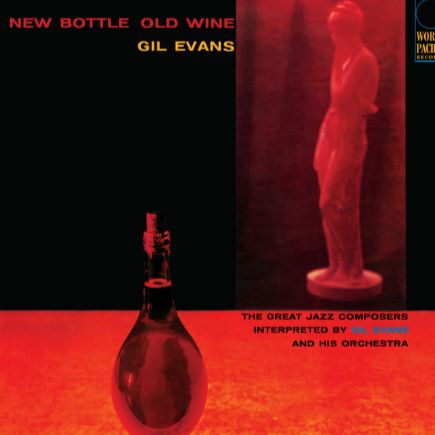King Porter Stomp: des racines du ragtime à l’apogée du swing
Composé en 1905 par Jelly Roll Morton, figure fondatrice du jazz, King Porter Stomp s’impose comme l’un des premiers jalons majeurs de cette musique en pleine gestation. Œuvre charnière entre le ragtime structuré et les libertés expressives du jazz naissant, ce morceau reflète la richesse des traditions afro-américaines qui nourrissent l’invention musicale de Morton.
D’abord enregistré en solo en 1923, puis en duo avec Joe ‘King’ Oliver au cornet l’année suivante, King Porter Stomp puise son inspiration dans l’univers de Porter King, pianiste admiré par Morton auquel il rend ici hommage. L’œuvre combine habilement la pulsation syncopée du ragtime, des inflexions blues et les prémices du swing, esquissant les contours d’un langage musical en pleine mutation.
Rapidement adopté par les orchestres de jazz, le morceau connaît une nouvelle vie dans les années 1930 avec l’émergence des big bands. Avec ses riffs répétitifs et accrocheurs, sa mélodie simple mais percutante, King Porter Stomp devient un véritable hymne de l’ère swing, porté notamment par Fletcher Henderson puis Benny Goodman, qui en livrent des versions marquantes.
Gil Evans revisite et transforme un classique
Le 9 avril 1958, à New York, Gil Evans enregistre King Porter Stomp pour son album New Bottle Old Wine, dans une version radicalement repensée qui illustre à merveille son approche novatrice de l’orchestration. Ce deuxième album en tant que leader marque un tournant: Evans y revisite huit standards du jazz, de St. Louis Blues à Lester Leaps In, en passant par Struttin’ with Some Barbecue, en y injectant la modernité et la richesse texturale qui définissent sa signature musicale.
Entouré d’un orchestre d’exception, il s’appuie notamment sur Cannonball Adderley, soliste principal de cette session, dont le jeu incisif donne une résonance nouvelle à la partition. À ses côtés, Chuck Wayne à la guitare, Johnny Coles à la trompette, Paul Chambers à la contrebasse et Art Blakey à la batterie contribuent à créer un tissu sonore dense et vivant. La présence d’Adderley crée une dynamique contrastée avec l’écriture orchestrale subtile et mesurée d’Evans, offrant ainsi un équilibre fascinant entre spontanéité et structure.
Dans King Porter Stomp, Gil Evans transforme un emblème du jazz de l’ère swing en une fresque sonore sophistiquée. L’introduction donne le ton: jeux de timbres, contrastes dynamiques, dialogues entre cuivres et bois dessinent un paysage orchestral à la fois raffiné et audacieux. L’esprit du morceau original est respecté, mais le langage en est métamorphosé — les rythmes swing sont revisités sous l’angle du cool jazz, enrichis par des harmonies plus complexes et des orchestrations qui repoussent les frontières du genre.
King Porter Stomp: de las raíces del ragtime al apogeo del swing
Compuesto en 1905 por Jelly Roll Morton, figura fundadora del jazz, King Porter Stomp se impone como uno de los primeros hitos fundamentales de esta música en gestación. Obra de transición entre el ragtime estructurado y las libertades expresivas del jazz naciente, el tema refleja la riqueza de las tradiciones afroamericanas que alimentan la invención musical de Morton.
Grabado por primera vez en solitario en 1923, y al año siguiente en dúo con Joe ‘King’ Oliver a la corneta, King Porter Stomp se inspira en el universo de Porter King, pianista admirado por Morton a quien rinde homenaje en esta pieza. La obra combina hábilmente la pulsación sincopada del ragtime, matices de blues y los primeros elementos del swing, esbozando los contornos de un lenguaje musical en evolución.
Rápidamente adoptado por las orquestas de jazz, el tema conoce una nueva vida en los años 30 con la aparición de las big bands. Con sus riffs repetitivos y pegadizos, y su melodía sencilla pero contundente, King Porter Stomp se convierte en un verdadero himno de la era del swing, impulsado notablemente por Fletcher Henderson y posteriormente por Benny Goodman, quienes ofrecen versiones memorables.
Gil Evans revisita y transforma un clásico
El 9 de abril de 1958, en Nueva York, Gil Evans graba King Porter Stomp para su álbum New Bottle Old Wine, en una versión radicalmente replanteada que ilustra a la perfección su enfoque innovador de la orquestación. Este segundo álbum como líder marca un punto de inflexión: Evans revisita ocho estándares del jazz —de St. Louis Blues a Lester Leaps In, pasando por Struttin’ with Some Barbecue— inyectándoles la modernidad y la riqueza textural que caracterizan su lenguaje musical.
Rodeado de una orquesta de primer nivel, se apoya especialmente en Cannonball Adderley, solista principal de la sesión, cuyo estilo incisivo aporta una nueva dimensión a la obra. Junto a él, Chuck Wayne en la guitarra, Johnny Coles en la trompeta, Paul Chambers en el contrabajo y Art Blakey en la batería contribuyen a construir una textura sonora densa y vibrante. La presencia de Adderley genera un contraste expresivo con la escritura orquestal sutil y controlada de Evans, estableciendo un equilibrio fascinante entre espontaneidad y estructura.
En King Porter Stomp, Gil Evans transforma un emblema del jazz de la era swing en una sofisticada pintura sonora. La introducción marca el tono: juegos de timbres, contrastes dinámicos, diálogos entre metales y maderas configuran un paisaje orquestal tan refinado como audaz. El espíritu de la pieza original se preserva, pero su lenguaje se reinventa: los ritmos swing se reinterpretan desde la perspectiva del cool jazz, enriquecidos con armonías más complejas y orquestaciones que amplían los límites del género.
King Porter Stomp: dalle radici del ragtime all’apice dello swing
Composto nel 1905 da Jelly Roll Morton, figura fondatrice del jazz, King Porter Stomp si afferma come una delle prime pietre miliari di questa musica in piena evoluzione. Opera di transizione tra il ragtime strutturato e le libertà espressive del jazz nascente, il brano riflette la ricchezza delle tradizioni afroamericane che nutrono l’invenzione musicale di Morton.
Registrato per la prima volta in solo nel 1923, e l’anno successivo in duo con Joe ‘King’ Oliver al cornetto, King Porter Stomp trae ispirazione dall’universo di Porter King, pianista ammirato da Morton al quale il pezzo rende omaggio. L’opera combina abilmente la pulsazione sincopata del ragtime, inflessioni blues e i primi accenni di swing, delineando i contorni di un linguaggio musicale in trasformazione.
Adottato rapidamente dalle orchestre jazz, il brano conosce una nuova vita negli anni Trenta con l’emergere delle big band. Con i suoi riff ripetitivi e accattivanti e la sua melodia semplice ma incisiva, King Porter Stomp diventa un autentico inno dell’epoca swing, portato al successo in particolare da Fletcher Henderson e poi da Benny Goodman, che ne offrono versioni memorabili.
Gil Evans rielabora e trasforma un classico
Il 9 aprile 1958, a New York, Gil Evans registra King Porter Stomp per l’album New Bottle Old Wine, in una versione profondamente rivisitata che esprime al meglio la sua visione innovativa dell’orchestrazione jazz. Questo secondo album da leader segna una svolta: Evans reinterpreta otto standard del jazz —da St. Louis Blues a Lester Leaps In, passando per Struttin’ with Some Barbecue— infondendo loro modernità e ricchezza timbrica, elementi distintivi del suo stile.
Circondato da un’orchestra d’eccezione, si affida in particolare a Cannonball Adderley, solista principale della sessione, il cui fraseggio incisivo conferisce nuova risonanza al brano. Al suo fianco, Chuck Wayne alla chitarra, Johnny Coles alla tromba, Paul Chambers al contrabbasso e Art Blakey alla batteria contribuiscono a creare una trama sonora densa e vibrante. La presenza di Adderley genera una tensione dinamica con la scrittura orchestrale sobria e raffinata di Evans, offrendo un equilibrio affascinante tra spontaneità e rigore compositivo.
In King Porter Stomp, Gil Evans trasforma un simbolo dell’epoca swing in un affresco sonoro sofisticato. L’introduzione imposta il tono: giochi di timbri, contrasti dinamici e dialoghi tra fiati e legni delineano un paesaggio orchestrale al tempo stesso elegante e audace. Lo spirito originario del brano è rispettato, ma il linguaggio è completamente rinnovato: i ritmi swing vengono reinterpretati attraverso la lente del cool jazz, arricchiti da armonie più articolate e orchestrazioni che spingono oltre i confini del genere.
King Porter Stomp: from the roots of ragtime to the height of swing
Composed in 1905 by Jelly Roll Morton, a foundational figure in jazz, King Porter Stomp stands as one of the earliest major milestones of the emerging genre. A pivotal work bridging the structured form of ragtime and the expressive freedoms of early jazz, the piece reflects the richness of African American traditions that fueled Morton’s musical creativity.
First recorded as a solo in 1923, and then in a duo with Joe ‘King’ Oliver on cornet the following year, King Porter Stomp draws inspiration from the world of Porter King, a pianist Morton admired and to whom he pays tribute in this composition. The work skillfully blends the syncopated pulse of ragtime, blues inflections, and early swing elements, outlining the contours of a developing musical language.
Quickly embraced by jazz orchestras, the piece found new life in the 1930s with the rise of big bands. With its catchy, repetitive riffs and its simple yet impactful melody, King Porter Stomp became a true anthem of the swing era—most notably through memorable versions by Fletcher Henderson and later Benny Goodman.
Gil Evans revisits and transforms a classic
On April 9, 1958, in New York, Gil Evans recorded King Porter Stomp for his album New Bottle Old Wine, offering a radically reimagined version that perfectly illustrates his innovative approach to orchestration. This second album as a leader marks a turning point: Evans revisits eight jazz standards —from St. Louis Blues to Lester Leaps In, including Struttin’ with Some Barbecue— infusing them with the modernity and textural richness that define his musical signature.
Surrounded by a top-tier orchestra, Evans relies especially on Cannonball Adderley, the session’s principal soloist, whose incisive playing gives the piece a renewed resonance. Alongside him, Chuck Wayne on guitar, Johnny Coles on trumpet, Paul Chambers on bass, and Art Blakey on drums contribute to a dense and vibrant sonic fabric. Adderley’s presence creates a compelling contrast with Evans’s subtle and measured orchestral writing, producing a fascinating balance between spontaneity and structure.
In King Porter Stomp, Gil Evans transforms a swing-era jazz emblem into a sophisticated sonic fresco. The introduction sets the tone: interplay of timbres, dynamic contrasts, and dialogues between brass and woodwinds shape an orchestral landscape that is both refined and daring. While the original spirit of the piece is preserved, its language is completely reimagined —swing rhythms are recast through the lens of cool jazz, enriched with complex harmonies and orchestrations that expand the boundaries of the genre.


